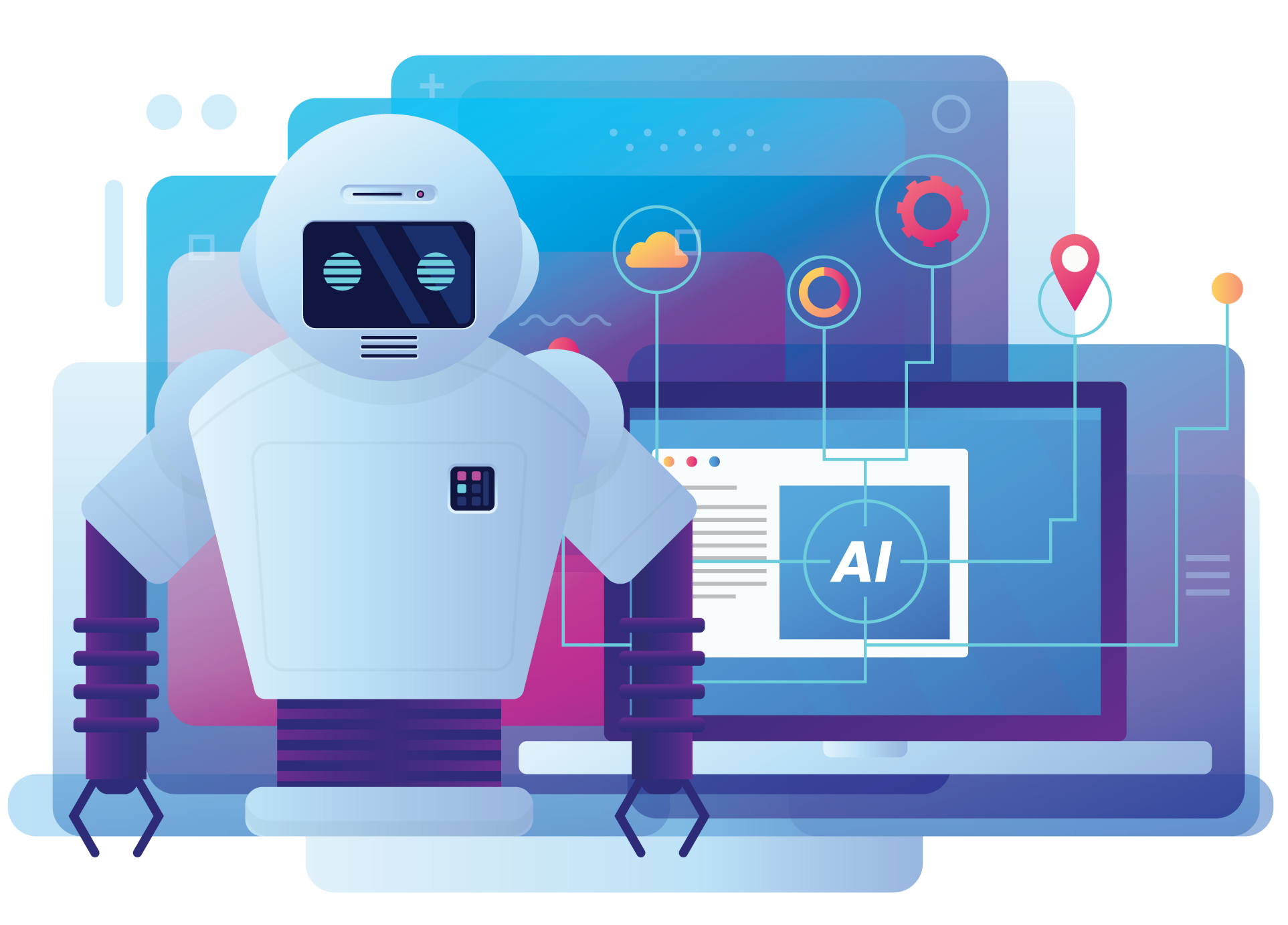Artificial Intelligence Markup Language (AIML) has become a cornerstone in the world of chatbots and conversational AI. It's like the secret sauce that makes machines understand humans better. AIML is not just another tech buzzword; it’s a powerful tool that bridges the gap between human language and machine understanding. Whether you're a developer, a business owner,, or simply someone curious about how chatbots work, AIML is worth exploring. So, buckle up and let's dive into the fascinating world of AIML!
Think about it this way: imagine having a conversation with your phone, and it actually understands what you're saying. That’s AIML in action. It's like teaching a machine to think and respond like a human, but with a bit more structure. AIML isn't just about creating basic chatbots; it's about building intelligent systems that can handle complex interactions seamlessly.
Now, before we jump into the nitty-gritty, let me tell you why AIML matters. In today's fast-paced digital world, businesses are looking for ways to enhance customer engagement and improve user experience. AIML provides the framework to create conversational agents that can handle everything from answering FAQs to processing complex requests. It’s not just about automating tasks; it’s about creating meaningful interactions.
- Unveiling The Life Of Jordan Camerons Exwife A Journey Through Love Loss And Resilience
- Jayson Tatums Ethnicity Exploring The Roots Of A Basketball Icon
What is AIML? Understanding the Basics
AIML, or Artificial Intelligence Markup Language, is essentially an XML-based language designed specifically for creating chatbots and conversational agents. It’s like the blueprint that developers use to teach machines how to communicate with humans. The beauty of AIML lies in its simplicity and flexibility, making it accessible even for beginners in the field of AI.
At its core, AIML works by matching patterns in user input to predefined responses. For example, if a user types "What's the weather today?", AIML can recognize the pattern and respond with the appropriate weather information. This pattern-matching system is what makes AIML so powerful and versatile.
Here’s a quick breakdown of what AIML does:
- Unveiling Janet Sheens Grandchildren A Closer Look At Her Family Legacy
- Unlocking The World Of Movie Rulz Torrent Magnet A Comprehensive Guide
- Facilitates natural language processing
- Enables machines to understand and respond to human queries
- Supports complex conversational flows
- Is highly customizable and adaptable
Why AIML is Essential for Conversational AI
AIML plays a crucial role in the development of conversational AI systems. Without it, creating intelligent chatbots would be a lot more complicated. AIML provides the structure and logic needed to build systems that can handle a wide range of interactions. It's like giving a machine the ability to think on its feet, or at least simulate that ability.
One of the key advantages of AIML is its ability to handle ambiguity in language. Humans don’t always speak in clear, structured sentences. Sometimes we use slang, abbreviations, or even make grammatical errors. AIML is designed to handle these nuances, ensuring that the machine can still understand and respond appropriately.
How AIML Works: A Deep Dive
To truly understand AIML, you need to know how it operates under the hood. AIML uses a system of categories, patterns, and templates to process user input and generate responses. Each category consists of a pattern (the user input) and a template (the machine's response). This simple yet effective structure allows AIML to handle a wide variety of interactions.
Let’s break it down further:
- Categories: These are the building blocks of AIML. Each category defines a specific interaction between the user and the machine.
- Patterns: These are the predefined inputs that the machine recognizes. Patterns can be as simple as "Hello" or as complex as "What is the capital of France?"
- Templates: These are the responses that the machine generates based on the matched pattern. Templates can include text, variables, and even calls to external APIs.
The Role of Categories in AIML
Categories are the heart of AIML. They define the rules that govern how the machine interacts with users. Each category consists of a pattern and a template, making it easy for developers to create and manage conversational flows. Think of categories as the DNA of AIML; they determine how the system behaves and responds.
For example, consider the following category:
Pattern: "What is your name?"
Template: "My name is AIML Bot. How can I assist you today?"
This simple category allows the machine to respond appropriately when a user asks for its name. By combining multiple categories, developers can create complex conversational agents that can handle a wide range of interactions.
The Evolution of AIML: From Simple Chatbots to Advanced AI
AIML has come a long way since its inception. What started as a simple tool for creating basic chatbots has evolved into a powerful framework for developing advanced AI systems. Today, AIML is used in everything from customer service bots to virtual assistants, and its applications continue to grow.
One of the key drivers of AIML's evolution has been the rapid advancements in natural language processing (NLP) and machine learning. These technologies have enabled AIML to handle more complex interactions and provide more accurate responses. As a result, AIML-powered systems are now capable of understanding context, recognizing intent, and even learning from user interactions.
Applications of AIML in Real-World Scenarios
AIML is not just a theoretical concept; it has real-world applications that are transforming industries. Here are a few examples:
- Customer Service: AIML-powered chatbots are revolutionizing the way businesses interact with customers. They can handle everything from answering FAQs to resolving complex issues, all while providing a seamless user experience.
- E-commerce: AIML is being used to enhance the shopping experience by providing personalized recommendations and answering product-related questions.
- Healthcare: AIML-powered systems are helping patients access medical information, schedule appointments, and even monitor their health.
- Education: AIML is being used to create intelligent tutoring systems that can adapt to individual learning styles and provide personalized feedback.
Challenges and Limitations of AIML
While AIML is a powerful tool, it’s not without its challenges and limitations. One of the biggest challenges is handling ambiguity in language. Even with advanced NLP techniques, machines can struggle to understand the nuances of human communication. This can lead to misunderstandings and incorrect responses.
Another limitation is the need for extensive training data. AIML systems require large datasets to learn and improve, which can be time-consuming and resource-intensive. Additionally, maintaining and updating AIML systems can be challenging, especially as new technologies and trends emerge.
Overcoming the Challenges of AIML
Despite these challenges, developers are finding ways to overcome the limitations of AIML. One approach is to combine AIML with other AI technologies, such as machine learning and deep learning. This hybrid approach allows systems to learn from user interactions and improve over time.
Another strategy is to incorporate feedback mechanisms that allow users to correct the system when it makes mistakes. This not only improves the accuracy of the system but also enhances the user experience. By continuously refining and improving AIML systems, developers can create more intelligent and effective conversational agents.
Future Trends in AIML
The future of AIML looks bright, with new trends and technologies emerging all the time. One of the most exciting developments is the integration of AIML with voice-activated systems. This opens up new possibilities for creating hands-free, voice-controlled interfaces that can be used in a variety of settings.
Another trend is the use of AIML in augmented reality (AR) and virtual reality (VR) applications. Imagine being able to interact with virtual characters that can understand and respond to your commands in real-time. This could revolutionize the way we interact with digital content and create new opportunities for immersive experiences.
The Impact of AIML on the Future of AI
AIML is set to play a key role in shaping the future of AI. As machines become more intelligent and capable of understanding human language, the possibilities are endless. From improving customer service to enhancing education and healthcare, AIML has the potential to transform industries and improve lives.
However, as with any technology, there are ethical considerations to keep in mind. Developers must ensure that AIML systems are designed with transparency, accountability, and fairness in mind. This will help build trust and ensure that AI is used for the betterment of society.
Getting Started with AIML: Tips for Developers
If you're interested in exploring AIML, there are a few things you should know. First, you’ll need to have a basic understanding of XML and programming concepts. While AIML itself is relatively simple, building complex conversational agents requires some technical expertise.
Here are a few tips for getting started:
- Start with the basics: Begin by learning the fundamentals of AIML, including categories, patterns, and templates.
- Experiment with open-source tools: There are several open-source AIML platforms available that allow you to experiment and build your own chatbots.
- Join the community: Connect with other AIML developers and enthusiasts to share knowledge and collaborate on projects.
- Stay up-to-date: Keep up with the latest trends and developments in AIML and related technologies to stay ahead of the curve.
Resources for Learning AIML
There are plenty of resources available for those looking to learn AIML. From online tutorials to books and courses, there’s something for everyone. Here are a few recommendations:
- AIML Documentation: The official AIML documentation is a great place to start. It provides a comprehensive overview of the language and its capabilities.
- Online Courses: Platforms like Udemy and Coursera offer courses on AIML and related technologies.
- Books: There are several books available on AIML, including "The Official AIML 2.0 Language Specification" by Dr. Richard S. Wallace.
Conclusion: The Power of AIML
In conclusion, AIML is a powerful tool that has the potential to transform the way we interact with machines. From creating simple chatbots to building advanced AI systems, AIML provides the framework and flexibility needed to develop intelligent conversational agents. While there are challenges and limitations to consider, the future of AIML looks bright, with new trends and technologies emerging all the time.
So, whether you're a developer looking to expand your skillset or a business owner seeking to enhance customer engagement, AIML is worth exploring. By understanding its capabilities and limitations, you can harness the power of AIML to create meaningful interactions and improve user experiences.
What are you waiting for? Dive into the world of AIML and see where it takes you. And don’t forget to share your thoughts and experiences in the comments below. Let’s keep the conversation going!
Table of Contents
- What is AIML? Understanding the Basics
- Why AIML is Essential for Conversational AI
- How AIML Works: A Deep Dive
- The Role of Categories in AIML
- The Evolution of AIML: From Simple Chatbots to Advanced AI
- Applications of AIML in Real-World Scenarios
- Challenges and Limitations of AIML
- Overcoming the Challenges of AIML
- Future Trends in AIML
- The Impact of AIML on the Future of AI
- Getting Started with AIML: Tips for Developers
- Resources for Learning AIML
- Unveiling The Phenomenon Of Princessbabybrat A Deep Dive Into Her World
- Why Movierulz App Continues To Challenge Legal Streaming Services


